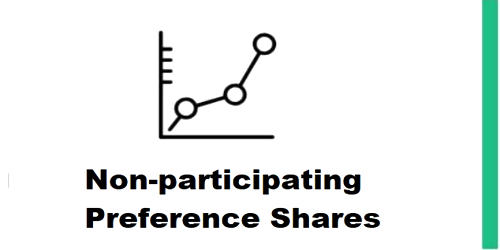Non-participating Preference Shares
Preference shares having no right to participate in the surplus profits or any surplus on liquidation of the company are referred to as non-participating preference shares. It is one in which a dividend is paid, usually at a fixed rate, and not determined by a company’s earnings. Here, preference shareholders receive only stated dividends and nothing more. Holders of this type of share do not participate in the distribution of profits to equity investors.
A non-participating preferred share has a feature that limits the dividends that can be issued annually. These shares are entitled only to a fixed rate of dividend and do not share in the surplus profits. This top limit is generally written on the face of the stock certificate either as an amount or as a percentage of the par value (the stock value stated in the corporate charter). The preference shares are presumed to be non-participating unless expressly provided in the memorandum or the articles or the terms of issue. These shares have a limit on how much can be issued annually to protect holders of common stock. If there were no limits, preferred shareholders might end up with all the dividend issued every year, which would be unfair for the common stockholders. This maximum limit is usually written or stated on the face of the stock certificate as a percentage of the par value. It can also be stated in real dollars.
A nonparticipating preferred stock is a preferred share in a corporation with a feature that limits the dividends that can be issued per year. This usually means that there is a specifically-mandated dividend percentage stated on the face of the stock certificate. This maximum limit is usually written or stated on the face of the stock certificate as a percentage of the par value. It can also be stated in real dollars. The reason why non-participating preferred stockholders have a maximum dividend limit each year is that preferred shareholders receive their dividends before any common shareholders. A company issues non-participating preferred stock when it is under pressure from the holders of its common stock to enhance the payment amounts to which they are entitled. In short, they are not allowed to get the benefits, and they are not holding the authority of participating in large amounts or also in the winding – up of the company. Thus, there is a cap on the number of distributions allowed to the holders of this type of stock.
















